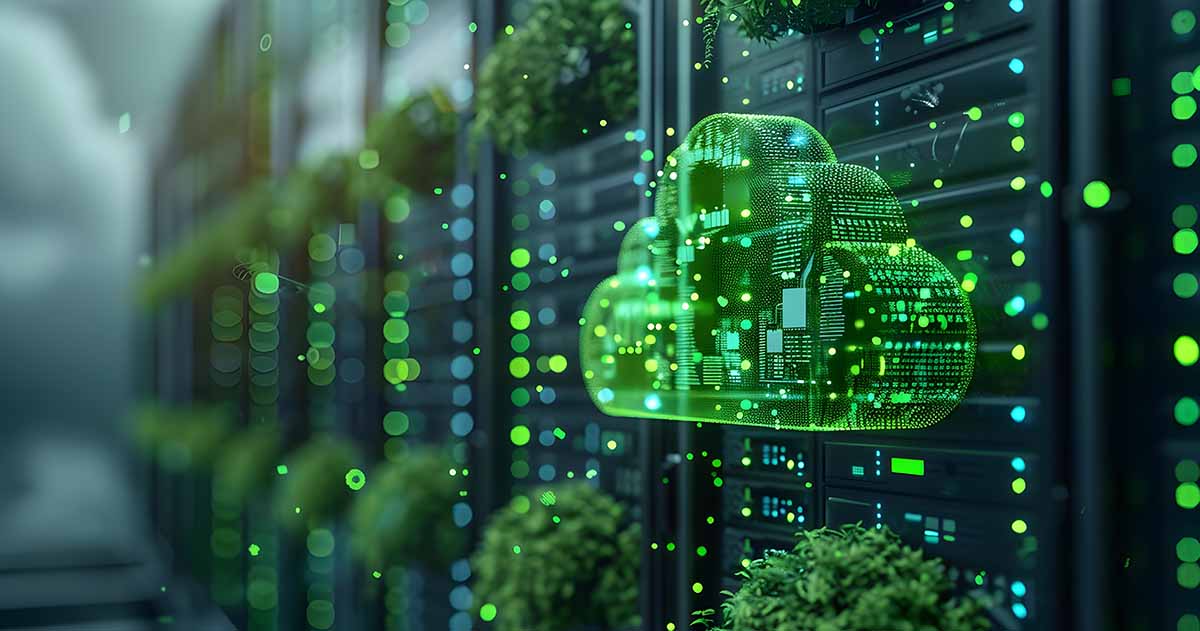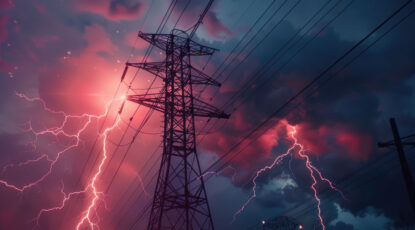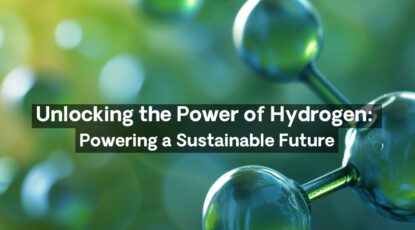There’s no denying that data centers now stand as the backbone of global digital infrastructure, crucial for managing emerging services like artificial intelligence (AI) and various online platforms. The importance of data centers extends beyond just data handling; they are integral to the operation of almost every service in the digital economy, from cloud storage solutions to the Internet of Things (IoT). The efficiency and reliability of the data center power supply are critical to ensuring that these facilities can handle the growing demands of the digital economy.
However, the critical operations of these data centers come at a cost—high energy consumption. As digital demands surge, so too does the power required to keep these data centers running efficiently and effectively. Recent analyses highlight a significant uptick in the energy requirements of data centers, raising concerns over their potential environmental impact due to increased electricity use and associated carbon emissions.
Recognizing these challenges, the industry has witnessed a shift towards more sustainable and energy-efficient practices. Innovations in green technology and a commitment to reducing carbon footprints have started shaping the future of data center operations. This blog post explores how green power solutions are not only feasible but also beneficial for data centers, ensuring they can meet future demands sustainably and responsibly.
The Current Landscape of Data Center Energy Consumption
Data centers are among the largest consumers of electrical power, with data center electricity consumption accelerating alongside advancements in technology, particularly AI workloads, and increasing online activity. According to a recent EPRI study, data centers could consume up to 9% of U.S. electricity generation by 2030, doubling the current use [1]. This is expected to rise as digital data creation and consumption continue to grow.
This significant energy use is not without its impacts. Data centers are pivotal in driving energy demand, which in turn has substantial environmental repercussions due to the associated carbon emissions. The conversation around data center energy consumption is complex, with a focus on the balance between operational efficiency and the environmental footprint.
Over the past decade, data centers have made considerable strides in improving energy efficiency through advanced designs, better management practices, and more effective cooling technologies. This decoupling of energy use from data growth signals a positive trend toward reducing the overall environmental impact per byte of data processed.
Defining Green Power in Data Centers
The quest for sustainability in data centers revolves around the concept of green power, which entails the use of energy sources that significantly reduce or eliminate carbon emissions associated with operational activities, but what exactly is green power?
What is Green Power?
Green power in the context of data centers refers to electricity generated from renewable energy sources that are naturally replenishing and environmentally friendly. This includes power from solar, wind, geothermal, and hydroelectric sources. These energy sources contrast sharply with traditional fossil fuels, which are not only finite but also major contributors to carbon emissions and climate change.
Sources of Green Power
The integration of renewable energy into data center operations is increasingly being recognized as both a sustainable practice and a strategic advantage. According to a report by CBRE, major data centers are setting ambitious targets for renewable energy adoption, with some aiming for up to 100% renewable energy use by 2030 [2]. This shift towards green energy is driven by both environmental considerations and the economic benefits associated with renewables, such as lower operational costs and more predictable energy pricing over time.
Benefits of Green Power
The benefits of utilizing green power in data centers extend beyond just environmental impacts. Renewable energy sources can provide long-term cost savings compared to traditional power sources, which are subject to volatile fuel prices. Additionally, the use of renewables can enhance a data center’s public image, appealing to environmentally conscious consumers and businesses increasingly valuing sustainability in their service providers.
Technological Innovations Driving Energy Efficiency in Data Centers
Cooling is one of the most power-intensive needs in data centers, traditionally accounting for a significant portion of the total energy usage. However, recent innovations in cooling technology have begun to change this dynamic significantly. Advanced cooling methods, such as liquid cooling and evaporative cooling systems, are proving to be game changers, allowing for more direct and efficient heat removal from server components, significantly reducing the amount of energy required to maintain optimal operating temperatures.
The evolution of server technology has also contributed to greater energy efficiency in data centers. The shift from traditional spinning hard disk drives (HDDs) to solid-state drives (SSDs) is a notable development. SSDs are not only faster but also consume less power, generate less heat, and take up less space. This transition supports higher data processing speeds and energy savings, allowing for the consolidation of hardware and a reduction in overall data center power requirements.
AI is not just fueling the energy demand; it’s also fixing it. The integration of AI and machine learning (ML) into data center management, known as “smart infrastructure,” is enhancing energy efficiency. These energy technologies enable predictive maintenance and dynamic power management, optimizing energy use across the data center floor. AI algorithms analyze data from numerous sensors within the facility to predict equipment failures before they happen and adjust cooling and power systems in real time to match the actual demand.
Strategies for Maximizing Data Center Energy Efficiency
Two of the most effective strategies for reducing energy consumption in data centers are virtualization and server consolidation. Virtualization allows multiple server environments to operate on a single physical server, significantly reducing the physical server count and, consequently, the overall data center power requirements for power and cooling. Similarly, server consolidation involves combining workloads onto fewer but more efficient servers, maximizing utilization while minimizing energy waste.
These practices not only decrease energy consumption but also reduce the need for physical space, further lowering cooling demands. This dual reduction significantly enhances the overall energy efficiency of data centers.
Advanced power management tools and data center power distribution systems, along with Data Center Infrastructure Management (DCIM) systems play a crucial role in optimizing data center energy usage. These tools, working in tandem with AI, allow for real-time monitoring and management of energy consumption, helping to identify inefficiencies and areas for improvement. For example, DCIM systems can precisely adjust cooling systems and server power loads based on current demand rather than peak capacity, which significantly reduces unnecessary energy expenditure.
Furthermore, advanced power management tools can automate energy-saving practices, such as shutting down idle servers during periods of low demand and dynamically managing power distribution across the data center floor. This level of detailed control and automation not only cuts down on energy costs but also extends the lifespan of the hardware by reducing overheating risks, ensuring data center uninterruptible power, and operational strains.
A notable example of successful energy-efficient practices can be seen in major tech companies such as Amazon. Through its AWS (Amazon Web Services) Cloud infrastructure, Amazon has implemented server consolidation and virtualization to achieve significant energy efficiencies. According to their sustainability report, AWS is designed to be more energy efficient than the average enterprise data center by up to 3.6 times [3]. This substantial improvement in energy efficiency is attributed to Amazon’s continuous innovation in server utilization and advanced architectural designs that reduce energy consumption across their massive scale of operations.
These strategies, supported by real-world applications and innovative management systems, are not just theoretical solutions but practical actions that leading data centers around the world are currently adopting to optimize performance and sustainability.
Challenges and Solutions in Adopting Green Data Center Technologies
Transitioning to green technologies in data centers presents a myriad of challenges. However, with careful planning and the right strategies, these obstacles can be overcome to harness the benefits of sustainable energy practices.
The most significant challenges in adopting green technologies in data centers include high initial costs and infrastructural compatibility, especially in older facilities. Older data centers often require substantial retrofitting to accommodate new, energy-efficient systems, which can be both costly and disruptive. Additionally, the infrastructure of these older facilities might not be capable of supporting modern green technologies without significant modifications.
The initial investment required for transitioning to green technologies is considerable, covering the costs of new equipment, installation, and potential downtime. However, the long-term savings and ROI from reduced energy expenses and possibly lower maintenance costs can offset these upfront investments. While the upfront costs are high, the reduction in operational expenses due to energy savings can lead to substantial financial benefits over time. Many regions offer incentives such as tax breaks and grants for data centers that implement green technologies, which can further aid in mitigating the initial financial burden.
Adaptive strategies for older data centers include phased upgrades and modular technology implementations. By upgrading systems in phases, data centers can spread out the financial and operational impacts over time, making it more manageable and less disruptive. For instance, incorporating modular UPS systems, or modular cooling units that can be scaled as needed allows data centers to adapt without undergoing a complete overhaul.
Additionally, implementing virtualization and software-defined data center technologies can maximize the use of existing hardware and reduce the need for physical expansions, which further aids in reducing the energy footprint.
The potential of green power to revolutionize the data center industry cannot be understated. By adopting sustainable energy practices, data centers not only reduce their environmental footprint but also enhance operational efficiencies and cut down on long-term costs. While adopting green technologies in data centers presents financial and infrastructural challenges, strategic planning and phased implementation can effectively address these issues.
The future of data centers lies in continuous innovation and a steadfast commitment to sustainability, particularly in optimizing the data center power supply to meet growing energy demands responsibly. As technology advances, so must our approaches to energy efficiency and green power. The industry must keep pace with the latest developments in renewable energy sources and eco-friendly technologies, ensuring that data centers remain at the forefront of sustainability efforts.
Dive into how Bloom Energy’s fuel cell solutions can address your immediate energy needs. Our team of experts is ready to create a tailored solution built to fit your energy requirements. Together, let’s power a more sustainable and resilient future. Contact our fuel cell solutions experts to start your journey towards efficient and reliable energy management with Bloom Energy.
Data Center Power Supply FAQs
- What is green power for data centers?
Green power for data centers refers to electricity sourced from renewable energy technologies such as solar, wind, geothermal, and hydroelectric systems. Utilizing these energy sources reduces data center energy consumption and enhances the energy efficiency of these facilities, supporting sustainable data center design.
- What are some effective strategies for improving energy efficiency in data centers?
Effective strategies for improving data center energy efficiency include virtualization, which allows multiple software environments to run on a single server rack, and server consolidation, which reduces power consumption by combining workloads on fewer servers. Both strategies lead to significant efficiency gains in energy usage and enhance the overall energy efficiency of data centers.
- What challenges do data centers face when transitioning to green technologies?
The transition to green technologies poses challenges, such as high initial costs and the need for extensive upgrades in data center design to accommodate new cooling systems, storage drives, and backup generators. These changes are crucial for developing an energy-efficient data center but require strategic planning and phased implementation to manage energy consumption effectively.
[1] Electric Power Research Institute (EPRI). EPRI Study: Data Centers Could Consume up to 9% of U.S. Electricity Generation by 2030. https://www.epri.com/reports/data-centers-electricity-usage.
[2] CBRE. Global Data Center Trends 2023. https://www.cbre.com/insights/reports/global-data-center-trends-2023.
[3] Amazon Web Services (AWS). AWS Sustainability. https://sustainability.aboutamazon.com/products-services/the-cloud.



